Bright Ideas: Conceptual Art Films
-
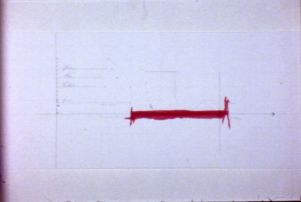 Thin Premises (1973) by Chris Langdon
Thin Premises (1973) by Chris Langdon
-
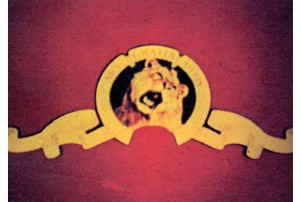 Metro-Goldwyn-Mayer, by Jack Goldstein
Metro-Goldwyn-Mayer, by Jack Goldstein
-
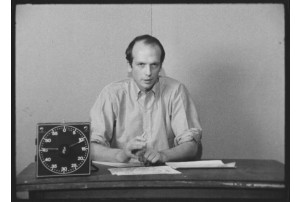 Picture and Sound Rushes, by Morgan Fisher
Picture and Sound Rushes, by Morgan Fisher
-
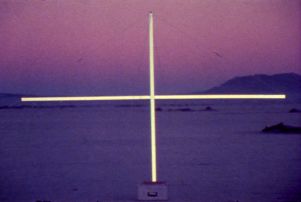 Dead Reckoning (1980) by David Wilson
Dead Reckoning (1980) by David Wilson
-
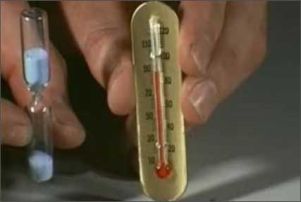 Time-Temperature (from Four Short Films) (1972-73) by John Baldessari
Time-Temperature (from Four Short Films) (1972-73) by John Baldessari
-
 John Baldessari. “Four Short Films 1972-1973,” 1972-1973. Courtesy Electronic Arts Intermix (EAI), New York.
John Baldessari. “Four Short Films 1972-1973,” 1972-1973. Courtesy Electronic Arts Intermix (EAI), New York.
-
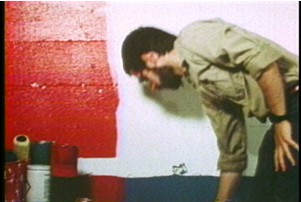 Murray and Max Talk About Money, by Roberta Friedman & Grahame Weinbren
Murray and Max Talk About Money, by Roberta Friedman & Grahame Weinbren
-
 Murray and Max Talk About Money, by Roberta Friedman & Grahame Weinbren
Murray and Max Talk About Money, by Roberta Friedman & Grahame Weinbren
-
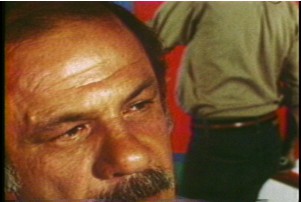 Murray and Max Talk About Money, by Roberta Friedman & Grahame Weinbren
Murray and Max Talk About Money, by Roberta Friedman & Grahame Weinbren
April 22, 2012, 7:30PM
Spielberg Theatre at the Egyptian, 6712 Hollywood Blvd., Los Angeles CA 90028
Alternative Projections: Experimental Film in Los Angeles, Screening 23
Los Angeles was one of the centers of Conceptual Art production, as reflected by multiple Pacific Standard Time exhibitions. Where sculptural and installation manifestations of Conceptual Art are more widely known, film and video also served as media for these sorts of explorations – works in which the concept preceded the work, and for which one could theoretically conceive the work with the rules themselves.
The program includes works by artists more know for working in other media, such as John Baldessari, Jack Goldstein, and David Wilson, and for those working in film, such as Thom Andersen, Morgan Fisher, Roberta Friedman, Grahame Weinbren, and Susan Rosenfeld.
At the Spielberg Theatre at the Egyptian, 6712 Hollywood Blvd.
The show is free! Reservations recommended, and will be held until 7:15 pm on show night, at which time they will be released to anyone present. Reservations available at
http://www.brownpapertickets.com/event/239612
In person: Thom Andersen, Susan Rosenfeld (schedules permitting)
Films to be Screened
-
 Metro-Goldwyn-Mayer by Jack Goldstein
Metro-Goldwyn-Mayer by Jack Goldstein
Metro-Goldwyn-Mayer (1975, 16mm, color, sound, 2min.)
Directed by Jack GoldsteinPrint courtesy of Galerie Buchholz, Koln, and MOCA
“Goldstein's iconic two-minute tour de force, brings media's subliminal power to the fore," - Jordan Kantor, Artforum review
“The film represents a short performance sequence that signifies the power of MGM as the penultimate studio—in fact, as the very model for the Golden Era of Hollywood studios, which even already in 1975 belonged to a distant “then” of the past. “Going to the movies” represents a staged sequence of ordered entrances into the apparatus of cinema. “ - Fareed Armaly , from longer article on the film: http://www.constanzeruhm.net/portfolio/jack-goldstein-metro-goldwyn-mayer.phtml
-
Melting (1965, 16mm, color, sound, 5min)
Directed by Thom AndersenRestored print from the Academy Film ArchiveVersion:1.0MELTING shows the natural monostructural disintegration of a strawberry sundae, its passage from rigidity to softness, from edibility to waste. The spoon resting on the plate refers to the human presence, which lurks behind the screen, declining to interfere with what transpires.
-
 Time-Temperature (from Four Short Films) (1972-73) by John Baldessari
Time-Temperature (from Four Short Films) (1972-73) by John Baldessari
Four Short Films (1972-73, super 8 on video, color, silent, 5.5min.)
Directed by John BaldessariThese Super-8mm films represent Baldessari's conceptual engagement with motion picture film, pointing to the technical strengths and weaknesses of the celluloid medium relative to video. Conceived on an intimate scale (only the artist's hands are visible as he manipulates a range of objects), Baldessari's Super-8 films replace text and speech with a cunning visual language, in which he wordlessly describes physical changes in his environment. Here Baldessari employs a method of communication that is based on spectacle rather than performance. - Electronic Arts Intermix
-
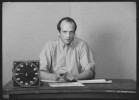 Picture and Sound Rushes, by Morgan Fisher
Picture and Sound Rushes, by Morgan Fisher
Picture and Sound Rushes (1973, 16mm, 11 min.)
Directed by Morgan Fisher"In a static medium shot a narrator seated at a table delivers an explanation of the combinations and permutations which the sound and picture elements of the conventional monochromatic sound motion picture afford, as the film itself undergoes them." --M. F.
-
 Thin Premises (1973) by Chris Langdon
Thin Premises (1973) by Chris Langdon
Thin Premises (1973, 16mm, color, sound, 5min.)
Directed by Chris Langdon -
 The Gypsy Cried, by Chris Langdon
The Gypsy Cried, by Chris Langdon
The Gypsy Cried (1973, 16mm, b/w, sound, 3min)
Directed by Chris LangdonRestored print from the Academy Film Archive
“When one likes something very much, or someone, it is hard to do anything but like it. I didn’t want to take anything away or add anything to this song because I like it a lot.” --Chris Langdon, Variable Area: Hearing and Seeing Sound, 1966-78 Program Notes, 2008
-
Subject (1974, 16mm, color, 5.5 min.)
Directed by Ken Feingold"SUBJECT presents a succession of shots in which different parts of a still photograph are concealed by the artist's hands. The entire photograph is revealed piecemeal over the course of the film, but we are never able to reconstruct a composite of the entire image. A voice-over reads a series of texts, some of which seem to describe the artist's present experience (e. g. "I am thinking of a certain color. This color is very controlled") amd some of which are more general statements about systems, such as "Another idea which can be brought to bear in this context is not necessarily one within the predetermined framework. All exclusions are deliberate and final. This also applies to any choices which have been made regarding the general arrangement of items," or, "It's an oversimplification to draw parallels within the single text between its various parts. Here, however, the ethics proper thinking are waived in favor of that simplicity, both for the purpose of having the text prolong itself, and for reasons not stated." "... Both the content and the medium in which the content occurs are finally only devices whereby structures of thought may be realized and communicated." --David James, "Six Films by Ken Feingold"
-
After Ten Minutes Lines (1976, 16mm, b/w & color, 15.5min.)
Directed by Roberta FriedmanPrint Courtesy of the Academy Film Archive
“After Ten Minutes Lines is essentially a film about time and the illusion of depth….Two systems of time measurement interact with each other: clock time, defined in minutes and seconds, and linear time, defined in terms of feet and frames running through the projector. Each visual indication of time passage (a diagonal stripe across frame, for example), is linked with a corresponding distinctive tone. As the tones occur simultaneously or sequentially, chords and rhythmic patterns are created which complement each newly formed visual design. Although the marks are painted on the surface of the film, as the drone-words change focus a false depth is created. A constant position shift seems to occur. Marks ‘move’ out towards us then slip back behind the rows of letters.
“Using this structure as a base for visual improvisation, I hand-painted and scratched a layer of colored textures along the length of the predominantly black and white film, stimulating a set of visual relationships with both the drone-words and the temporal markers. Sometimes words are obscured and occasionally obliterated, or markings are animated to their final positions. Running multi-colored sprocket hole imprints seems to retard or rush the progress of the projected film: those made with super 8 millimeter sprockets as a stencil appear to speed the film, while the 35 millimeter hold prints seem to slow it down. This later operates as a variegated background, but also at times detaches itself to provide a minimal narrative interest (for example, the gradual intersection of two lines). The film ends shortly after the ultimate chord, the final (and only) occurrence of all tones and all visual indicators concurrently.” – Roberta Friedman, in New Magazine, May 1977
-
 Murray and Max Talk About Money
Murray and Max Talk About Money
Murray and Max Talk About Money (1979, 16mm, color, sound, 15 min.)
Directed by Roberta Friedman and Grahame WeinbrenPrint Courtesy of the Academy Film Archive
We are always interested in constructing ways of evoking the pleasures of cinema without implicity accepting an ideology -- of passivity, manipulation, and repressed violence - that we would explicitly reject. Can there be films that remailn cinematic withour indulging in one form of pornography or another? Murray and Max ... is, in part, a proposal, a blueprint, for such a form of cinema.” – Grahame Weinbren
-
 Dead Reckoning (1980) by David Wilson
Dead Reckoning (1980) by David Wilson
Dead Reckoning (1980, 16mm, color, sound, 9min.)
Directed by David WilsonRestored print from the Academy Film Archive
A film which seems deceptively simple, Dead Reckoning comprises three identical-length shots which explicitly demonstrate the process of shooting a landscape, reframing the footage according to a specific idea of visual order, and then re-presenting it, now «corrected». Framing and re-framing a landscape is an expression of our desire to make order of what we see out there, to catalog it or at least understand it in some organized way. In Dead Reckoning, his last 16mm film, David Wilson creates a beautiful dialogue between this very conceit and the fragile human inability to succeed in such an endeavor. By suggesting the numerous ways in which we try to understand the environments around us (a surveying cross, an airplane, a camera, an optical printer, a projector, a movie theatre…), Wilson’s film ends up revealing the major flaw in the concept, which is that these attempts at controlling our world are all the while directed at our own blind fumblings, and the landscapes are in fact the things that contain us.
-
Now Playing (1983, 16mm, color, silent 24fps, 7 min.)
Directed by Susan RosenfeldPrint Courtesy of the Academy Film Archive and Susan Rosenfeld
Unseen in decades!
The subject of Now Playing is the institution of conventional film as I saw it in the early 1980s in the United States. The simple juxtaposition of the fragments of text followed by the single shot of the facade of a movie theater proposes a criticism of the institution of commercial cinema by suggesting the sameness and predictability of the experiences offered by movies made within it…. The concern is that cinema-goers who are in turns conditioned by prior movie going experiences may find it difficult to accept anything outside of the familiar narrowness of commercial films. The marquee of the theater is represented as blank to suggest that any one of the excerpts might serve there equally well. Viewers of Now Playing are asked to consider the possibility that the interchangeability of the critical comments presented suggests the interchangeability of the films themselves. At the same time the actual text composed from the excerpts is left to speak for itself. – S. R.